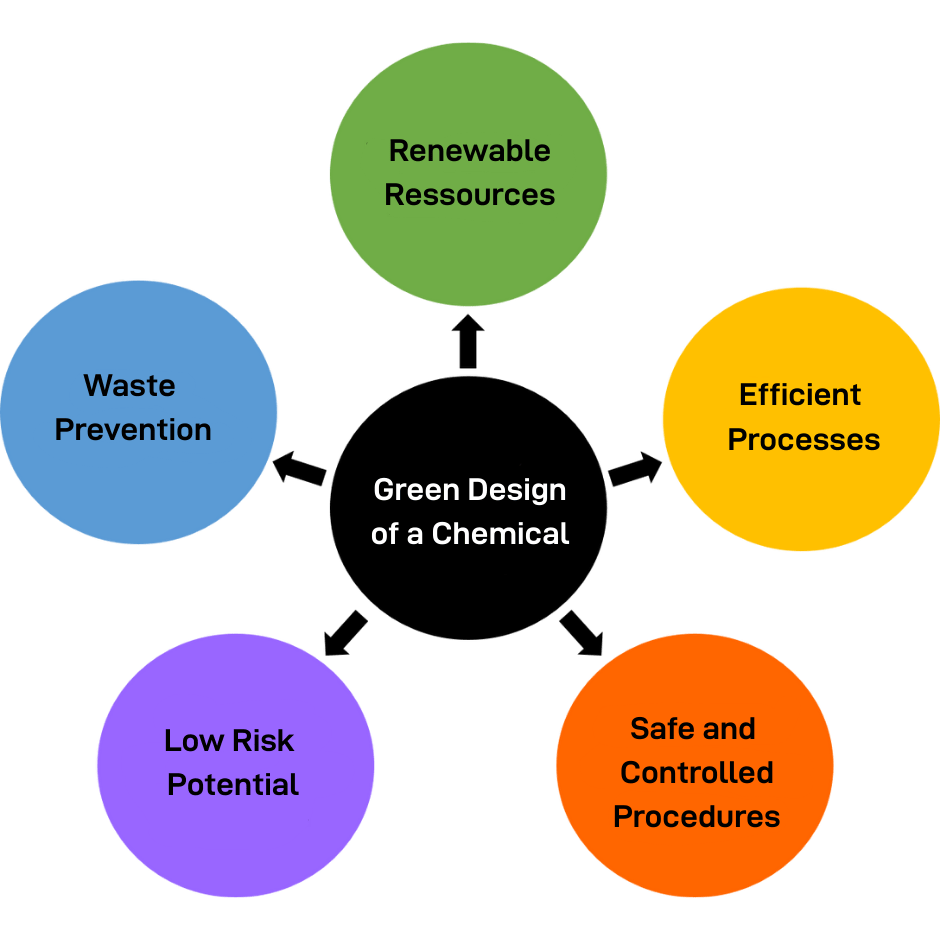
The 12 principles of green chemistry
Have you ever heard of the “12 Principles of Green Chemistry”?
In the 1990s, these were established by chemists John Warner and Paul Anastas, and they describe the sector’s holistic, interdisciplinary approach. These include:
- Waste prevention
- Avoidance of by-products (atom economy)
- Carrying out syntheses with less hazardous substances
- Production of the safest and most environmentally friendly chemicals possible
- Use of environmentally friendly solvents and auxiliary substances
- Use of energy-efficient processes
- Use of renewable raw materials
- Avoidance of derivatives as intermediates in syntheses
- Use of catalysts
- Production of biodegradable substances
- Use of process analytics for continuous monitoring of syntheses
- Accident prevention
5 goals of green chemistry
In addition, these principles can be assigned to five objectives of Green Chemistry:

Sources: Grüne Chemie | Bedeutung | Umweltbundesamt
More articles on green chemistry:










